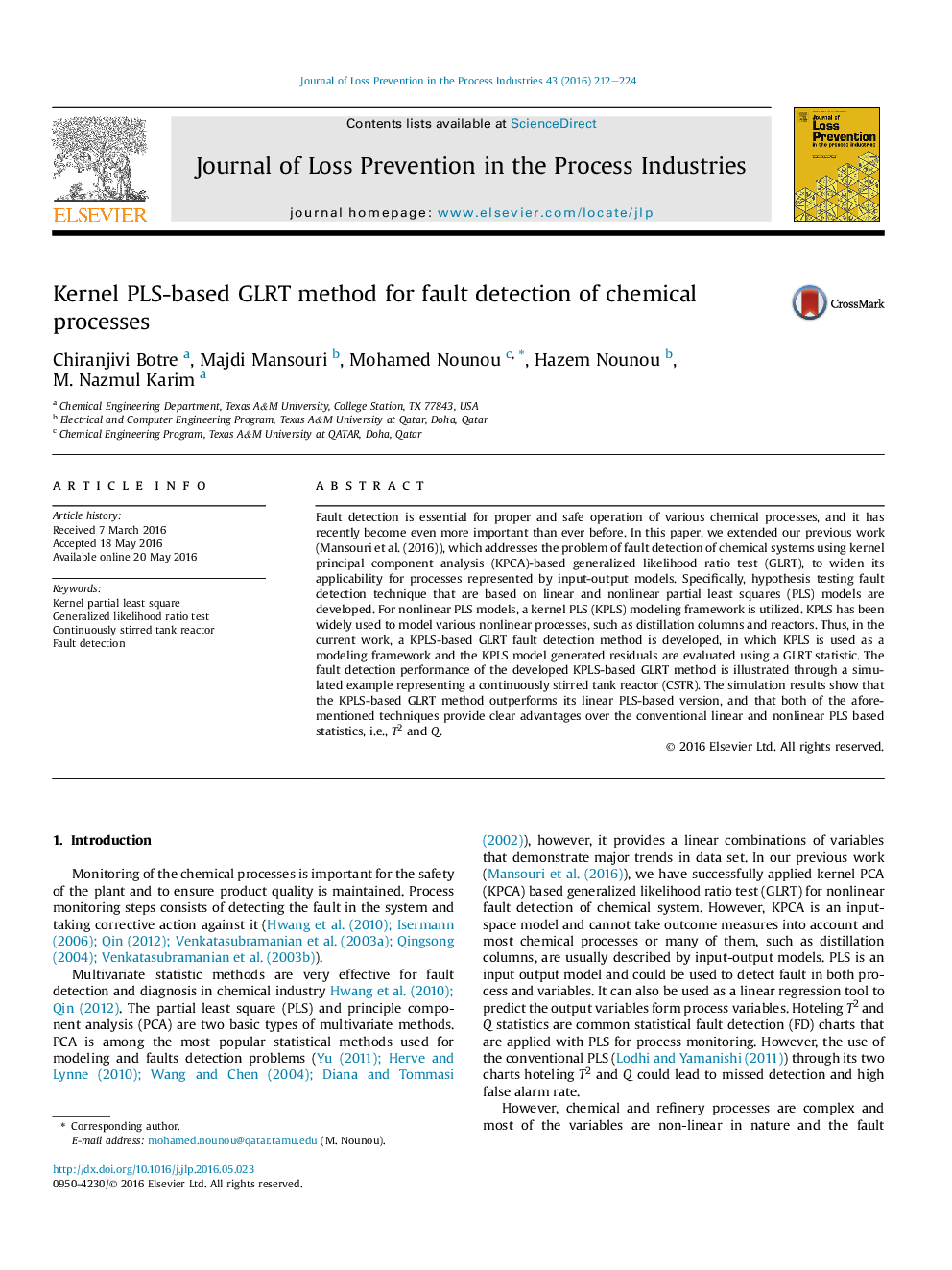| Article ID | Journal | Published Year | Pages | File Type |
|---|---|---|---|---|
| 585927 | Journal of Loss Prevention in the Process Industries | 2016 | 13 Pages |
•New linear and nonlinear PLS -based GLRT methods are developed.•The developed methods are utilized to monitor processes represented by PLS models.•A reactor example is used to assess the performances of the developed methods.•The simulation results show the effectiveness of the developed methods.
Fault detection is essential for proper and safe operation of various chemical processes, and it has recently become even more important than ever before. In this paper, we extended our previous work (Mansouri et al. (2016)), which addresses the problem of fault detection of chemical systems using kernel principal component analysis (KPCA)-based generalized likelihood ratio test (GLRT), to widen its applicability for processes represented by input-output models. Specifically, hypothesis testing fault detection technique that are based on linear and nonlinear partial least squares (PLS) models are developed. For nonlinear PLS models, a kernel PLS (KPLS) modeling framework is utilized. KPLS has been widely used to model various nonlinear processes, such as distillation columns and reactors. Thus, in the current work, a KPLS-based GLRT fault detection method is developed, in which KPLS is used as a modeling framework and the KPLS model generated residuals are evaluated using a GLRT statistic. The fault detection performance of the developed KPLS-based GLRT method is illustrated through a simulated example representing a continuously stirred tank reactor (CSTR). The simulation results show that the KPLS-based GLRT method outperforms its linear PLS-based version, and that both of the aforementioned techniques provide clear advantages over the conventional linear and nonlinear PLS based statistics, i.e., T2 and Q.
